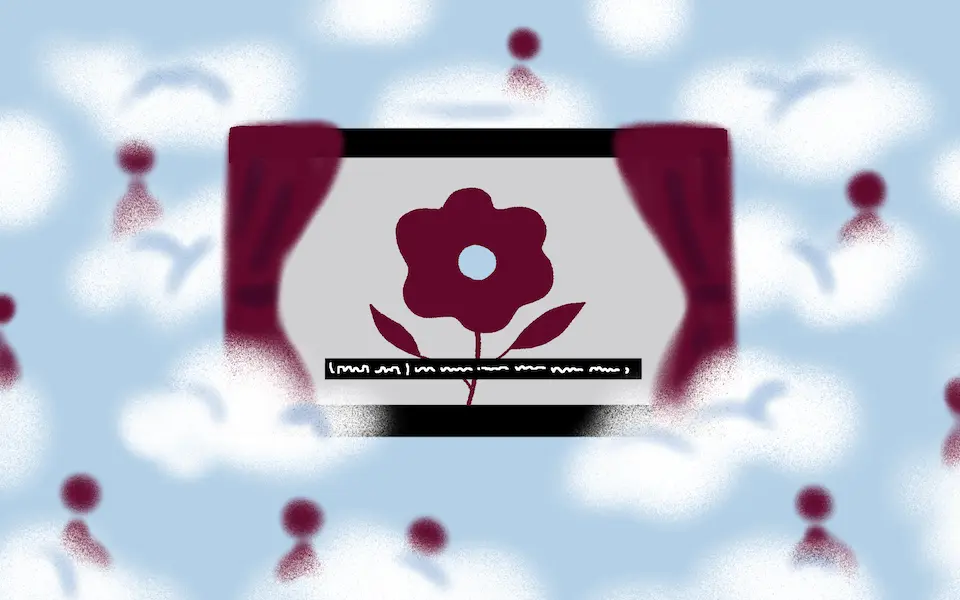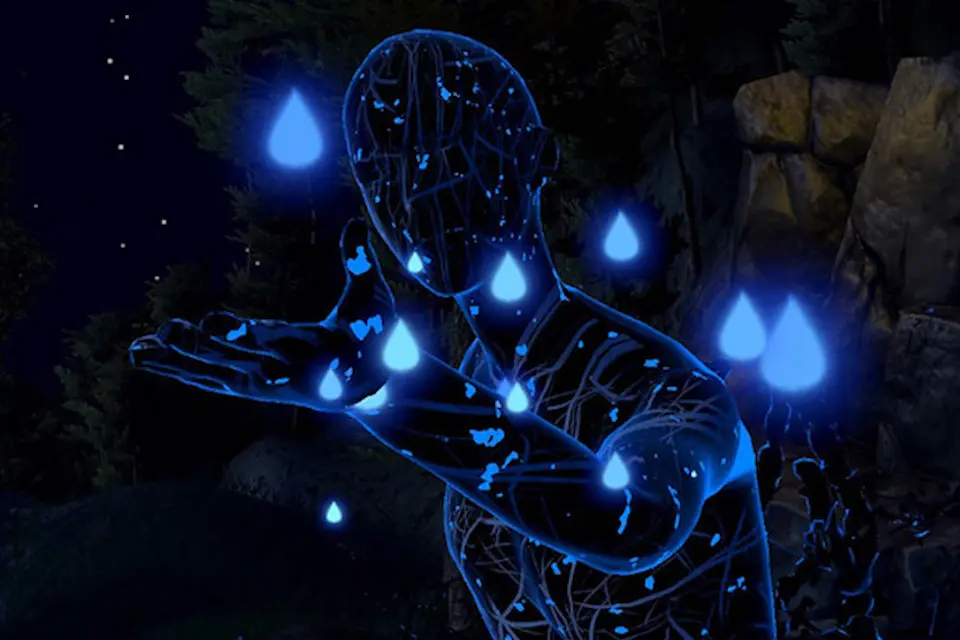
How a virtual evolution is making Sundance more accessible
Published on September 08, 2021
Every year, we explore the teamwork it takes to bring films to the screen at the Sundance Film Festival. Today, we'll look at how the Institute is collaborating to open doors for filmmakers and fans with disabilities.
In the spring of 2020, when Sundance Festival Director Tabitha Jackson realized gathering in-person in Park City wouldn’t be possible, she pivoted to an ambitious new plan for 2021. Jackson and her team not only explored unique ways to present a festival online, they rebuilt their New Frontier program as a virtual space where visitors could interact as avatars.
As a result, more people in more places were able to experience the festival for the first time, in new ways. The bold reinventions were so successful, they went beyond making the best of a bad situation—they reshaped the future of the festival in fundamental ways.
“There are things I would find inconceivable to pull back on,” said Jackson. “The main one being the reach of the festival, and the accessibility for people who, for whatever reason, physical, geographical, financial, could never think of coming to Sundance Film Festival on the mountain. The accessibility and ability to encounter these films for the first time from where they are from makes me very excited to see what's going to come out of it.”
Removing barriers of entry
Though lockdowns kept festival goers from gathering in person, they also proved to be a catalyst for change. Moving online democratized access to the festival in 2021, but the virtual evolution of Sundance was actually an expansion of the Institute’s ongoing work to improve accessibility for artists, attendees, and film industry workers with disabilities.
Spencer Alcorn, Director of Communications at The Sundance Institute, says the experience of 2021 was extremely educational. As they’re planning for 2022, he says they’re “using the newfound accessibility afforded by digital as a north star.”
More people in more places were able to experience the festival for the first time, in new ways.
“[When it’s] presented in person in Utah, the festival has a number of barriers to entry—cost being key among them,” says Alcorn. “Eliminating the necessity of in-person travel, lodging, and food and beverage expenses, in a ski town at the height of the season, really opened the door wider. People were then able to selectively engage with individual films or explore the program more broadly, because the pressures that come with in-person access were eased.“
To continue expanding accessibility, Sundance has established an internal Accessibility Team that proactively sets standards, goals, tangible plans, and a future vision for accessibility in all their year-round operations—from the festival to digital platforms to Labs, which are workshops that give screenwriters and directors the chance to work on emerging projects with established industry professionals.
Reaching out to historically marginalized voices has been a key part of Sundance Institute’s work with artists, most notably through their Indigenous Program. “Our Outreach & Inclusion program more recently builds off that foundation via bespoke fellowships, robust granting, and a deep bench of allied organizations, all in order to expand our impact in support of artists from many historically marginalized communities,” says Alcorn.
Changing perceptions and moving online
Alcorn says better accessibility requires being in consistent communication with the disability community. “We leave our doors open for feedback and the expression of individual needs at all times.”
The Accessible Futures Intensive is another way they’re proactive in meeting those needs. This summer, the workshop returned as a virtual program providing consultations and career development opportunities for filmmakers with disabilities and accessibility inclusivity trainings for all staff.
The endeavor was organized in collaboration with Easterseals Southern California, and RespectAbility, both of which are Allied Organizations of the Sundance Institute, alongside additional partner organizations like FWD-Doc. In 2019, RespectAbility and Easterseals both hosted Lab sessions at Sundance Institute to introduce their work to the filmmaking community and give participants a chance to ask questions and learn from industry decision makers.
“For films to reflect American society, you have to bring in people from all different backgrounds,” says Lauren Appelbaum, Vice President of Communications and Entertainment & News Media at RespectAbility. “We brought in 22 folks, some with visible physical disabilities, others with intellectual and developmental disabilities, some with disabilities you couldn't see at all. For those executives to come in and talk to this group, it can change their perception of who can be a good candidate for their programs.”
“For films to reflect American society, you have to bring in people from all different backgrounds.”—Lauren Appelbaum
At one session, a participant who has an intellectual disability spoke about working as a production assistant on major films. “I saw some execs drop their mouths in surprise,” recalls Appelbaum. “I think in their mind, they're like, ‘Of course, we could hire folks who use wheelchairs,’ but they were not thinking that someone with an intellectual disability could be on set.”
In 2020 and 2021, members of Sundance Institute joined 30 RespectAbility Lab participants in virtual conversations to encourage more disabled applicants for Sundance programming. RespectAbility team members also provide disability inclusion and accessibility trainings for Sundance employees.
As someone who became a member of the disability community herself after a fall damaged her sympathetic nervous system, Appelbaum brings personal experience to her work at RespectAbility.
“I was grateful that I knew folks within the community because I had to relearn how to do things,” says Appelbaum. “That’s why hiring disabled folks in the entertainment industry is such a good thing. Because we all had to think creatively. We all have certain things that we can't do the way that most people do, so we find out another way to do them.”
Appelbaum says remote collaboration tools have enabled more people to join their online training sessions. “We were using Zoom before the pandemic because we recognized that folks with disabilities can't attend live events all the time,” she says. “It's harder to travel, so we've been doing virtual events that have been free for a very long time. Switching to virtual for us meant more people could participate. It wasn't limited to a geographic location. People can participate from wherever they are.”
Improving the experience for every kind of audience
New technology is helping make Sundance more accessible, but Appelbaum says there are still more opportunities to improve the experience for an audience with disabilities.
“When I was at Sundance in 2019, I was in a boot due to my disability,” she recalls. “When it was kind of icy out, there were times where I had to ask people for help. The sheer fact of having it where people can [participate] from their home makes it so much more accessible. It's already made a huge difference. If you're low vision, being able to stream it on your TV is huge, because then you're not looking at a small screen.”
Her biggest wish is that every film would be accessible to the one-in-four adults who have a disability. While more films are now likely to have captions available, very few have audio description. “It does cost more money to audio describe a film than to have captions,” says Appelbaum. “Sometimes people are completing their film right up until the festival, then they'll add the audio description after that. But [not having audio description] excludes millions of viewers, especially if it's a darker video. Folks who have low vision or are blind are not going to be able to follow along.”
Appelbaum’s hope is that filmmakers will think about making their work accessible as they’re creating their work. “That's our goal, right? For people to take a step back at the early planning stages, and say, ‘How can I ensure everyone can participate in this?’“



